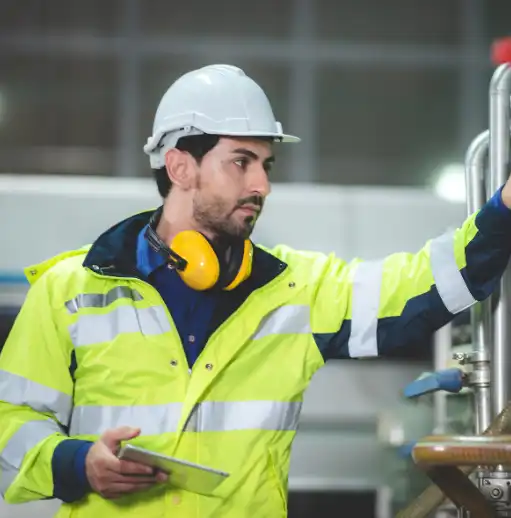
Preventive maintenance (PM) is a proactive approach to maintaining assets and equipment by regularly checking and addressing potential issues before they become significant problems. This comprehensive guide will help you understand the basics, set up, run, and improve your preventive maintenance program.
What is Planned Preventive Maintenance?
Planned preventive maintenance involves scheduling regular inspections and maintenance tasks to prevent unexpected equipment failures. This proactive approach ensures that assets are well-maintained, reducing production errors, work injuries, and asset damage. By staying ahead of potential issues, you can save time, money, and resources in the long run.
Understanding Preventive Maintenance (PM), a PM, and PMs
Preventive maintenance (PM) refers to the routine of periodic inspections and maintenance tasks. A PM means a specific preventive maintenance task or inspection, while PMs refer to multiple tasks. For example, PMs can include checking for water or oil leaks, inspecting pump gaskets, or changing motor oil.
Preventive maintenance, in general, is the overall strategy of regular maintenance. A PM refers to a single scheduled maintenance task or inspection, while PMs refer to multiple scheduled maintenance tasks or inspections.
Preventive Maintenance Checklists vs. Instructions
Preventive maintenance checklists are essential for ensuring consistency and thoroughness in maintenance tasks. They standardize the process, making it easier to train new staff and avoid overlooking critical steps. A checklist might include items such as checking for leaks, inspecting belts and hoses, and ensuring proper lubrication of moving parts.
Preventive maintenance instructions provide detailed steps for performing maintenance tasks. They ensure that tasks are completed correctly, reducing the risk of equipment failure and unplanned downtime. For example, the instructions might outline the steps to shut down and lock out the equipment, inspect the belts for wear and tear, replace worn belts as necessary, and reassemble and restart the equipment.
The benefits of using preventive maintenance checklists and instructions are significant. Standardization ensures all technicians follow the same procedures, which leads to fewer errors and higher-quality maintenance. Efficiency is improved as clear, step-by-step instructions help technicians complete tasks quickly and accurately. Training new staff becomes simpler as they can follow detailed checklists and instructions. Consistency in maintenance practices reduces the risk of unscheduled breakdowns and downtime.
Why is Routine Maintenance Important?
Routine maintenance delivers numerous benefits, including reduced unplanned downtime, increased profits, extended asset life cycles, enhanced safety, and regulatory compliance. Regular maintenance helps prevent sudden equipment failures, ensuring higher productivity and better margins. Proper care and maintenance prolong the life of equipment, reducing the need for costly replacements. Regular checks reduce the risk of accidents and injuries, creating a safer working environment. Meeting regulatory requirements is essential for avoiding fines and maintaining a good reputation.
Steps to Setting Up a Preventive Maintenance Program
To set up a preventive maintenance program, start by assembling your team. Include maintenance managers, technicians, and finance department representatives. Ensure everyone is invested in the project’s success by explaining the benefits and addressing any concerns.
Next, inventory your assets. Create a detailed list of all machinery, equipment, and assets that require maintenance. Include details such as make, model, serial numbers, and locations. Collect comprehensive data, such as specifications, identification numbers, and fixed locations. This data helps in planning and scheduling maintenance tasks effectively.
Develop maintenance tasks by defining inspections and tasks for each asset. Create specific maintenance tasks for each piece of equipment, which can include visual inspections, lubrication, part replacements, and more. Set PM frequencies based on time or usage, determining how often each task should be performed. For example, some tasks might be performed weekly, monthly, or based on hours of operation.
Train your team by providing comprehensive training on your Computerized Maintenance Management System (CMMS). Ensure that all team members are proficient in using the CMMS to schedule, track, and report maintenance tasks. Explain the benefits of preventive maintenance to ensure technicians understand how it improves efficiency and reduces downtime. Provide hands-on training sessions and access to additional resources, such as manuals and videos.
Regularly analyze, adjust, and improve your PM schedule. Use data from your CMMS to identify trends and areas for improvement. Adjust maintenance tasks and frequencies based on equipment performance and maintenance history. Analyze reports to find recurring problems and address them proactively. For example, if a particular machine frequently breaks down, investigate the cause and adjust the maintenance schedule accordingly.
Key Performance Indicators (KPIs) for Preventive Maintenance
Measuring the effectiveness of your preventive maintenance program involves tracking key performance indicators (KPIs). Downtime reduction is a crucial KPI, as a successful PM program should show a significant reduction in unexpected equipment failures. Track the total downtime before and after implementing the PM program.
Cost savings is another important KPI. Effective PM helps in reducing the need for emergency repairs and the associated costs. Track reductions in labor, materials, and overtime costs, comparing maintenance costs before and after implementing the PM program.
Asset performance is a critical KPI, which involves monitoring improvements in asset uptime and reliability. This includes tracking metrics such as mean time between failures (MTBF) and mean time to repair (MTTR). An increase in MTBF and a decrease in MTTR indicate an effective PM program.
Summary
Preventive maintenance software streamlines the development, scheduling, and tracking of your PM program. By addressing small issues before they escalate, you can reduce costly downtime, increase asset longevity, and boost overall efficiency. Implementing a preventive maintenance program ensures that you move from reactive to proactive maintenance, leading to better resource allocation, improved safety, and higher profitability. The right CMMS helps you manage every aspect of your preventive maintenance program, from scheduling to tracking and reporting, ensuring that you get the maximum ROI from your maintenance efforts.








